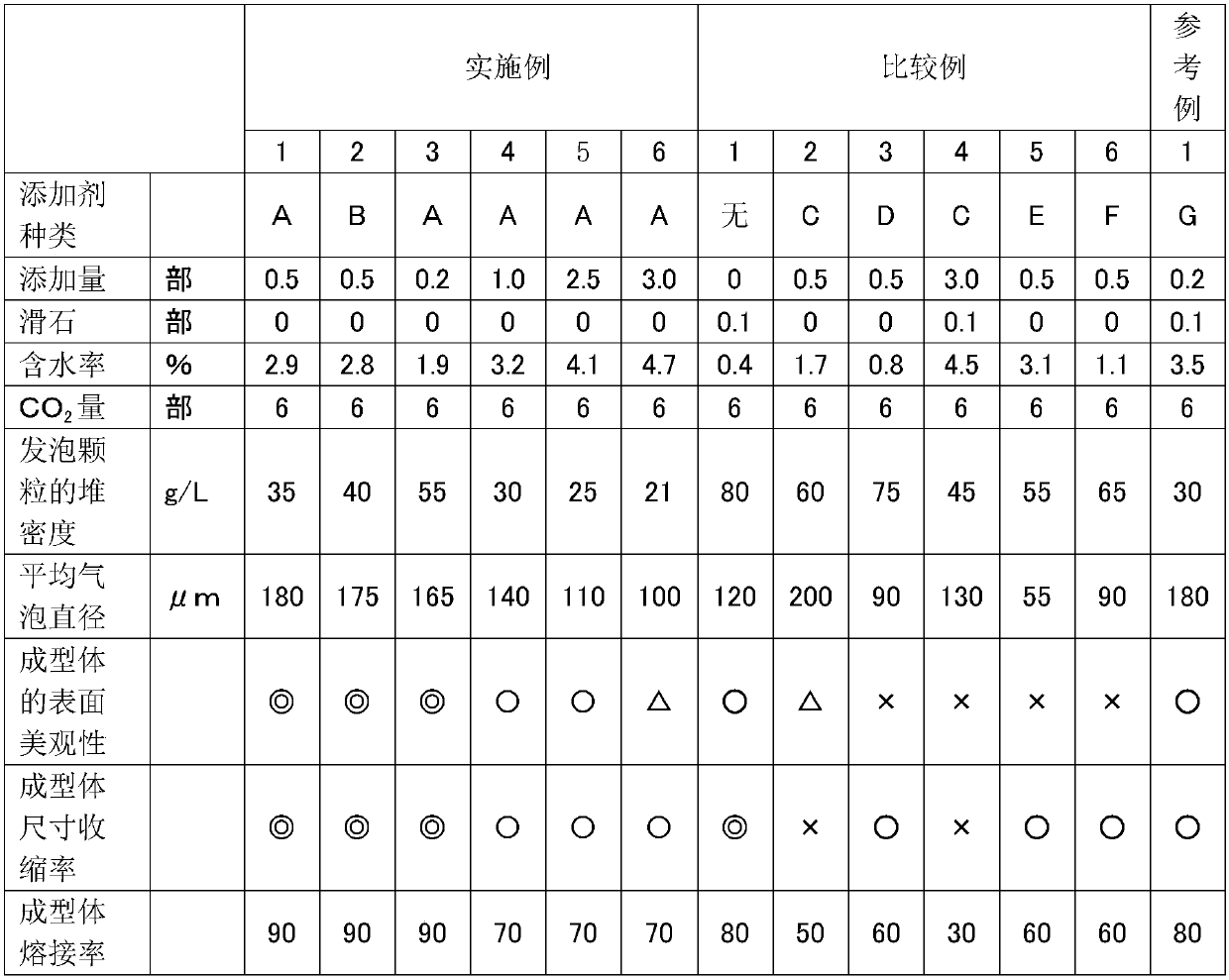Polyolefin resin foam particle, preparation method thereof and polyolefin resin foam forming body
A technology of polyolefin resin and foam particles, which is applied in the field of polyolefin resin foam moldings, can solve the problems of obvious surface wrinkles, deterioration of surface appearance, and increased foaming rate of foam particles, so as to reduce environmental load, good looking effect
- Summary
- Abstract
- Description
- Claims
- Application Information
AI Technical Summary
Problems solved by technology
Method used
Image
Examples
preparation example Construction
[0052]
[0053] As a method of manufacturing the polyolefin-type resin particle in this invention, the following manufacturing process (it is also called a "granulation process") is mentioned, for example. First, the polyolefin-based resin and, if necessary, additives such as silver-based zeolite are blended by a mixing method such as a dry blending method or a masterbatch method. Next, the resulting mixture is melt-kneaded using an extruder, kneader, Banbury mixer, etc., extruded, and chopped using a cutter, granulator, etc., into cylindrical, oval, or spherical shapes. Polyolefin-based resin particles having desired shapes such as cubes and cuboids. Alternatively, the blend may be cut into pellets and cooled immediately after extruding the above-mentioned blend into water directly from a die.
[0054] Without limitation, in one embodiment of the invention a method using an extruder such as a twin screw extruder. Specifically, silver-based zeolite additives, foaming nucle...
Embodiment 1
[0115] [Preparation of polyolefin-based resin particles]
[0116] Get 100 parts by weight of polypropylene resin composition a (ethylene content 3.0% by weight, MI=6g / 10min, melting point is 144 ° C), add 0.5 parts by weight of silver zeolite (manufactured by Fuji Chemical Industry Co., Ltd.) with an average particle diameter of 2 μm , BM-102NS, hereinafter referred to as A), it was dry mixed. Then put the mixture obtained by dry mixing into a twin-screw extruder, melt and knead it at a cylinder temperature of about 220°C, and extrude it into a linear shape through a cylindrical die with a diameter of 1.6 mm installed at the front end of the extruder, and water-cooled After that, it was cut with a cutter to obtain polypropylene-based resin pellets. The average particle weight of the polypropylene-based resin particles was 1.2 mg.
[0117] [Preparation of polyolefin-based resin expanded particles]
[0118] In a capacity of 0.3m 3 100 parts by weight of the obtained polyprop...
Embodiment 2
[0123] Except for using silver-zinc zeolite (manufactured by Fuji Chemical Industry Co., Ltd., BM-102NSC, hereinafter referred to as B) with an average particle diameter of 1.5 μm instead of A, the preparation of resin particles and the preparation of resin foamed particles were carried out in the same manner as in Example 1. and in-mold foam molding. Table 1 shows the evaluation results of the expanded polypropylene resin particles and the expanded polypropylene resin molded article.
PUM
| Property | Measurement | Unit |
|---|---|---|
| particle size | aaaaa | aaaaa |
| diameter | aaaaa | aaaaa |
| melt flow index | aaaaa | aaaaa |
Abstract
Description
Claims
Application Information
 Login to View More
Login to View More - R&D
- Intellectual Property
- Life Sciences
- Materials
- Tech Scout
- Unparalleled Data Quality
- Higher Quality Content
- 60% Fewer Hallucinations
Browse by: Latest US Patents, China's latest patents, Technical Efficacy Thesaurus, Application Domain, Technology Topic, Popular Technical Reports.
© 2025 PatSnap. All rights reserved.Legal|Privacy policy|Modern Slavery Act Transparency Statement|Sitemap|About US| Contact US: help@patsnap.com

